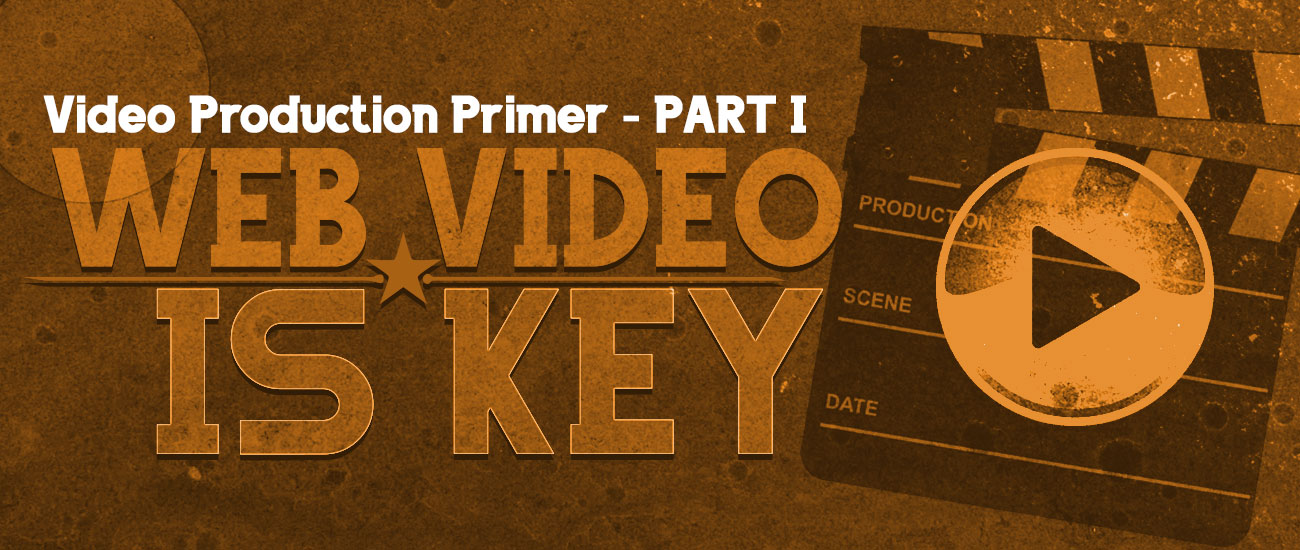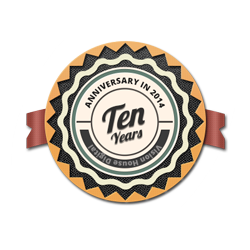Video production can seem a daunting task to the uninitiated. We have tried to make this primer thorough and understandable so you can follow the process and participate as a member of the production team; after all, you are the expert in your field, and we come along side to tell your story. Keep in mind that not everything mentioned here will apply to your project; and some items will invariably be left out, but this guide should present most of what you need to produce an effective and compelling video.
There are three major phases to successfully producing a video: Pre-production, Production, Postproduction. First up, Pre-produciton…
Pre-Production (aka “planning”)
[iconbox title=”Cauton – Don’t Skimp Here!” icon=”applications-multimedia.png”]This phase of video production can take some time, and many people want to rush through it, but don’t! It is the most important part! Everything else is determined in advance by what happens here. A good foundation means a great result… but rush through and wing-it… not so much. The more prepared you are going into the production phase, the more you save in time and money.[/iconbox]
Pre-Production Meetings This is where your video begins to take shape. Anyone can pitch ideas until they’re blue in the face, but at some point, decisions have to be made about what needs to be in your video. Often, the parameters of a video are established through a brainstorming session, performed either by yourself and/or your colleagues, or between your company and VISION HOUSE. This is the opportunity to examine all of the various elements that you could possibly include in your video, and then choose those elements that will best communicate your ideas to the target audience within budget.
[tab_container initial_open=”1″]
Here’s what we’ll want to know the first time we talk about your project:
- Purpose Questions
- What is your topic ie- motivational goal/product/service?
- What do you want to say about it?
- What is the purpose of your video project?
- Does it fall into one or more of these categories?
- Corporate Image
- Motivational
- Historical
- Training (in depth)/Instructional/How-to
- Demonstration
- New Service or Product Announcement
- TV Commercial/Infomercial
- Trade Show/Sales (Show service or product in action)
- Tour Video
- Internal or External Communication/News
- Event Promotion
- Event Coverage/Re-cap/Documentary
- “Day in the Life” or Video Biography
- I-MAG/Live Event Broadcast
- What is the message you’re trying to deliver?
- Who is your target audience? Are you trying to appeal to a certain characteristic or quality of your audience?
- How do you plan on using/applying the video?
- What do you want your audience to do after viewing your video?
- What emotions do you want them to display? How should they feel?
- What actions do you want them to take?
- How long do you think it should be?
- Can the topic be covered in one video, or would a series of shorter videos do the trick?
- How long do you plan to use the video?
- Does the information contained in the video ever change or need updated?
- Decision Making and Budgetary Questions
- When is your desired completion date?
- Are there any time constraints?
- Availability of Personnel
- Availability and Condition of Locations
- One time event?
- What is your budget for the project?
- Are there any cost factors or special considerations involved? (Wants vs. Needs)
- Things that must be included
- Things that would be nice to have included
- Who has final authority for approving the project? Is it one person or a committee?
- How involved do you want to be in the process of producing and editing the video?
- How are you going to distribute your video?
- What quantity will be needed? (SD or HD Web Stream, Blu-Ray, SD-DVD)
- What organization pattern best fits the purpose & topic?
- Chronological- Chronological pattern is best suited when describing a series of events or steps in a process. It is also effective in showing how a series of “causes” created an “effect.” Used best for Video Biographies and “Day in the Life” videos.
- Topical- A Topical pattern takes one main idea and divides it into several subtopics, all of which contribute to or constitute the main idea. This pattern is best used when the subtopics are all given equal importance.
- Ascending or Descending Order-This pattern is similar to the Topical pattern except items are arranged in an order of most important to least important or vice versa.
- Spatial- A Spatial pattern simply arranges ideas and visuals in a geographic pattern, such as a tour video.
- Who, What, When, Where, How and Why (Journalistic)- Answer these basic questions in your video. This style is good for an event promotion video.
- Problem-Solution- A Problem-Solution pattern includes three main sections. First, the problem is analyzed to explore its history and magnitude. Then the causes of the problem are explained. Finally, the solution is explained and support for the solution is provided.
- Comparative Advantages- This pattern is used to compare and contrast two or more items, brands, solutions or options.
- Deductive/Method of Residues- This pattern is best used when your audience is well aware of the problem and causes. In this case you first present the solutions. Then you examine each solution critically, ruling them out until you get to the final solution. Finally, you provide evidence why the final solution is best and ask your audience to support it.
- Monroe’s Motivated Sequence- This is a pattern based on psychological research by Alan H. Monroe in the 1930’s and has become the standard for presentations. It is comprised of several steps:
- Gain the Audiences ATTENTION,describe the problem, demonstrate a NEED for change
- SATISFACTION: present a practical, and concise solution to the problem .
- allow your audience to picture or VISUALIZE the results, and
- request immediate ACTION from your audience
- What presentation style would be most effective in conveying the message? (May be a combination of styles)
- Narration with supporting visuals
- Voice over narration
- On-Camera Talent
- Parody of/Homage to <fill in the blank>
- Captured live event/presentation/demonstration/panel discussion
- Interviews/Testimonials
- Dramatization/Re-enactment
- Music Video
- Text/ Graphical with supporting Sound Effects
- What are the Logistics of the Video?
- Do you need a script?
- Will a rough draft/sketch be provided?
- Would the video be best shot on location or in the studio?
- Do you need a set?
- Do you need props?
- Do you need to shoot in one location or many? Where?
- Are there any special concerns due to the location?
- Noise?
- Lighting?
- Availability of People?
- Size?
- Cleanliness?
- Do we need to provide food, water, etc.?
- Is there a need for additional gear?
- Is there a need for talent?
- On-Camera
- Voice-Over
- Internal
- Professional
- Internal or Professional talent considerations:
- Male or Female
- Demographic considerations
- Make-up
- Teleprompter
- Ear Prompter
- Costumes
- Is there a need for news or stock footage, special music, animation or any other item that can not be easily obtained?
- Is there a need for special video effects or camera tricks? (Chroma Key, etc.)
- What should the pace/style/mood of the video be like.
- What duration should the video be?
- Is there a video or TV show that you’ve seen that you would like to model your video after?
[/tab_container]
If you can answer the above questions, then everyone involved should be well acquainted with the goals of the video project and how the project will ultimately be realized. Now you can begin to think about HOW you would like your video presented. To be honest with you, most people may have a couple of ideas of what they like to see in their video, but really don’t want to sit down and map out its structure. That’s where we come in; we’ve been doing this for years!
The Proposal Once the WHO, WHAT, WHERE, WHEN, WHY and HOW’s have been determined, we’ll submit a proposal that’ll cover the scope of the entire project. If you desire, we can arrange a proposal meeting where we’ll explain every aspect and bullet-point of our proposal.
Scripting Once the proposal is accepted, it’s time to script it. The script is the master plan that details the elements of your program, from the razzle-dazzle open to the final credits. (It’s kind of like a blueprint for a house!) If it’s in the script, it’ll be in your completed video. A script provides a point of common reference for everyone involved, from the crew to the video’s financiers. The script serves as a checklist and lets everyone know precisely what will be in your video. The more detailed the script is, the easier the following steps become.
Pre-Production Planning Once a script has been completed and approved, it’s time for the pre-production planning. This is where we plan how to shoot every element in the script, and design a shooting schedule. Arrangements are made (when needed) for talent, costumes, locations, props, special equipment, transportation, etc. to make sure that your shoot will progress as smoothly as possible.
Once the script, budget and arrangements have been made, it’s time for: Production…. Part 2 in the series.

